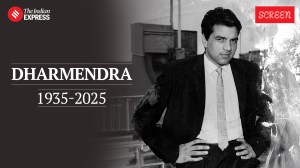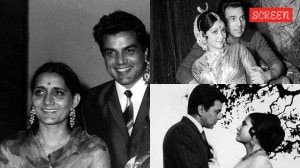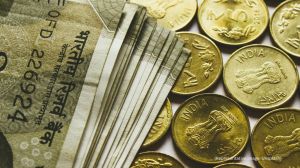Click here to follow Screen Digital on YouTube and stay updated with the latest from the world of cinema.
Bollywood’s dancing diva owned a fleet of cars, 8,000 dresses and 5,000 shoes; family deserted her, didn’t have money for medicines in last days
Mentor to Helen and known as dancing diva during Bollywood's Golden age, Cuckoo Moray lived a lavish, Westernized lifestyle, but in her final days, she didn’t even have enough money to buy painkillers as she battled cancer.
 During the peak of her career, Cuckoo Moray introduced a thirteen-year-old, Helen, daughter of a family friend to the world of dance.
During the peak of her career, Cuckoo Moray introduced a thirteen-year-old, Helen, daughter of a family friend to the world of dance.When people think of Hindi cinema’s golden era, names like Helen often come to mind, an actress who captured hearts and inspired many to take up dancing. But while Helen is well-known today, few realize that she had a mentor who played a crucial role in her life. That woman was Cuckoo Moray, a legendary dancer famous for her cabaret and club performances in Bollywood during the 1940s and 1950s. Not only did Cuckoo introduce Helen to films, but she also shared a close, almost family-like bond with her. However, in her last days, Cuckoo was deserted by those who she cared for all her life, and was left destitute.
Cuckoo Moray was born in 1928 into an Anglo-Indian family during British rule in India. From a young age, she loved dancing and dreamed of becoming a top performer. By 1944, Bombay Talkies was already a prominent studio, with actresses like Devika Rani and Shobhana Samarth making their mark. But the glamour quotient was still missing, and Cuckoo filled that gap with her distinct westernized look and style. Her break came early, at just sixteen, with the film Mujrim starring the acclaimed actor Motilal. Cuckoo made a strong impression with her dance performance, which opened doors for many more offers. Soon, cabaret dance became a staple in Hindi films, and Cuckoo was admired for her skills in both cabaret and classical Indian dance forms.
Over the next five years, she appeared in nearly fifty major films, working alongside giants like Raj Kapoor, Mehboob Khan, H.S. Rawail, and Devendra Goel. The only legendary filmmaker she never collaborated with was V. Shantaram. Though her roles were mostly centred on dance numbers, Cuckoo’s presence was magnetic and unforgettable. She had a special partnership with playback singer Shamshad Begum, much like the later duo of Helen and Asha Bhosle.
A defining moment in her career was Mehboob Khan’s Anokhi Ada (1949), which cemented her reputation as a top dancer. The hit film Andaz (1949), featuring stars Raj Kapoor, Dilip Kumar, and Nargis, also gave her a chance to showcase her acting abilities.
 Cuckoo was the queen of film dancing in Hindi cinema of the 1940s and 1950s
Cuckoo was the queen of film dancing in Hindi cinema of the 1940s and 1950s
Some of her most memorable performances include the bar dancer number “Ek do teen” in Raj Kapoor’s Awara (1951) and the seductive “Patli kamar hai” alongside Premnath in Barsaat (1949). Other notable films include Bazaar (1949), Patanga (1949), and Aankhen (1950). Aan (1952) was her only color film. She even sang the song “Neele aasmani” in Guru Dutt’s Mr. and Mrs. 55 (1955). No wonder, she became a highly sought-after actress. She charged Rs 6,000 per song and reportedly led an extravagant lifestyle, so much so that she dedicated one of her three cars just to take her dogs out for drives.
At the height of her career, Cuckoo introduced a 13-year-old Helen, the daughter of a family friend, to the world of dance. The two even appeared together in Yahudi (1958), Chalti Ka Naam Gaadi (1958), and Heera Moti (1959). When asked about Cuckoo’s influence on her film career, Helen laughed, saying, “She didn’t influence me, I think she influenced my mother. Because I didn’t dream of becoming anything, I didn’t dream of entering the films. I was only dreaming of having fun with my friends and going to school. My mother thought that she would like me to enter the films too. I was very young then, I must have been about 12 or 13 years old. In short, it was Cuckoo who got me into the line.”
Cuckoo helped Helen find her footing in the Hindi film industry. Helen recalled, “She was in this film called Shabistan (1951) and I was in the chorus because I was too young. In those days, they were not known as item numbers, it was known as solo dances. I was too young for that. So I was just as a group dancer. So for about a year, I was in the chorus and after that, I was selected to do one duet dance.” Cuckoo also helped actor Pran get his first film, Ziddi (1948), launching his own legendary career.
 Cuckoo Moray died in absolute poverty.
Cuckoo Moray died in absolute poverty.
Off screen, Cuckoo lived a glamorous, westernized lifestyle. She owned a lavish bungalow in Khar, one of Mumbai’s upscale neighbourhoods. Being Anglo-Indian, she mostly spoke English with her close friends. Often seen outside her home in long skirts or gowns, she was known for smoking 555 cigarettes. Her extravagance extended to owning 5,000 pairs of shoes, 8,000 dresses, and three luxury cars, one for herself, another for family and friends, and a third just for her pet dogs.
Despite her opulence, Cuckoo was generous and kind-hearted. She believed in sharing her wealth with friends and lived day-to-day without saving for the future. She frequently hosted grand parties with food catered from Mumbai’s five-star hotels. However, as time passed, Cuckoo’s career began to fade. Younger dancers like Helen and Vyjayanthimala started to dominate the scene. Eventually, the offers stopped coming altogether. Her last film was Mujhe Jeene Do (1963).
With the years, Cuckoo Moray’s fortunes declined sharply. Reports say an income tax raid uncovered undeclared assets, leading to their confiscation. From living like a queen in a palatial home, she ended up with nothing. Her family and friends deserted her during her toughest days. Left alone, Cuckoo took care of herself, struggling even to afford basic food. Her final years were marked by severe illness; diagnosed with cancer, she couldn’t even afford painkillers. On September 30, 1981, she passed away, alone and forgotten. Today, Cuckoo’s name is rarely remembered, but her impact on Bollywood’s dance and glamour scene remains undeniable.
- 01
- 02
- 03
- 04
- 05


































